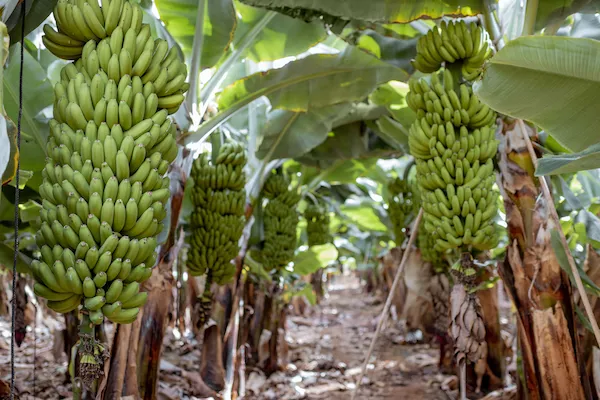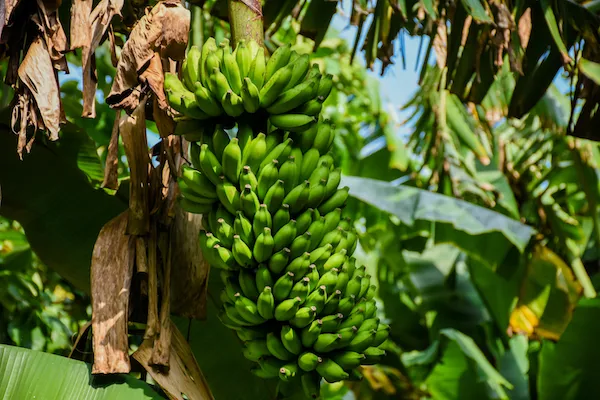Despite the many issues and challenges that have been brought on by the COVID-19 pandemic, the Ecuador banana harvest is continuing fairly normally, with minimal disruptions, though the logistics have met a few more obstacles. Juan José Pons is the coordinator of the Banana Cluster of Ecuador, which is built up of the banana guilds and associations in the country. “The cluster makes up 100% of Ecuador’s banana exports, and 60% of all banana production in the country. Our goal is to have a strategic plan for the banana industry in Ecuador to establish a framework for a sustainable and competitive future for the sector,” Pons explains.

Harvests continue regularly, logistics are more challenging
As the coordinator of the banana cluster, Pons is able to provide a broad overview of the industry and everything that has been going on since the outbreak of the pandemic. “The harvests have been continuing on a mostly regular basis in the fields. The government has issued some clear guidelines and protocols for safety, and all the partners and producers have been working to follow these rules. The workers have been issued protective clothing and gloves, and the lunch breaks and work areas have been altered to reflect the social distancing guidelines,” he shares.
While the harvests are continuing as usual, there have been some issues with the logistics. Pons explains: “There have been container issues and shortages, which has caused delays in the movement of the product. These delays have been as high as 40-50% but have now gone down to about 10% so the situation has fortunately improved.”
The ports in Ecuador continue to fully function. One of the causes of the delays is the lower numbers of workers in the container yards and transportation systems. “Due to COVID-19, and even before the pandemic due to TR4 precautions, all the containers need to be fully sanitized before they are used. But there are less workers in the container yards to complete these sanitations. On top of this, the maintenance is also happening at slower rates, which is adding to the delays.”
Since the harvests continued at normal rates but there were delays in the ports, some of the product wasn’t shipped in time. “I would estimate around 20% of production at on certain days was not able to be loaded and sold. But, at least a third of this excess product was redistributed to the food banks and helped to feed the people in Ecuador who have been unable to work due to the pandemic,” Pons says.

Impacts on the market
The banana market has slowed down, says Pons, and this is because of two basic issues. “The first issue is that there have been many late payments, because everyone is struggling. The second is that there have been price reductions, in the spot market specifically. The contracted market is stable because the price has been set, but the banana industry is approximately 30% spot market and this has been quite unstable, and these producers have been affected by the price reductions and the payment issues. The spot market has been going up and down – how much depends on the day and the week - and right now it’s down,” he explains.
In addition to this, the production costs of the bananas have gone up. “The delay in the logistics has added extra costs, and the costs of the protective equipment for workers, all of that is absorbed in the production cost. But the contracted programs are set in their price, so the growers are the ones affected by this. And while the cost goes up, the liquidity has been reduced because the payments are sometimes slow and late.”
Demand reflects logistics and mobility
The banana demand has been conditioned by logistical constraints, Pons shares. “There are peaks in the demand when the distribution chain is filled, and everyone rushes to buy the product. Then after that there’s a low when the distribution is limited by the logistics, though this does work differently depending on the market,” he says. “Consumer habits have changed, and they are turning more to non-perishable products because they are going to the stores less often now. But they are also looking for nutritious products, and bananas are great for that: they’re filling, nutritious and cheap. So, as the mobility of the market starts opening back up, we’ll have a much better market than ever.”
Pons concludes: “We in Ecuador’s banana industry are giving our utmost effort to continue working and supplying affordable, good, and nutritious product to the world; our mission is to create and protect jobs and provide work with the best security available to create a sustainable way into the future.”
For more information:
Juan José Pons
Email: jjponsa@hotmail.com
